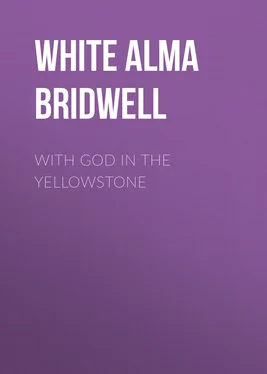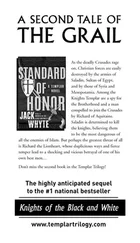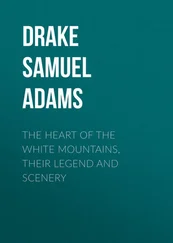Alma White - With God in the Yellowstone
Здесь есть возможность читать онлайн «Alma White - With God in the Yellowstone» — ознакомительный отрывок электронной книги совершенно бесплатно, а после прочтения отрывка купить полную версию. В некоторых случаях можно слушать аудио, скачать через торрент в формате fb2 и присутствует краткое содержание. Жанр: foreign_prose, История, foreign_edu, foreign_antique, на английском языке. Описание произведения, (предисловие) а так же отзывы посетителей доступны на портале библиотеки ЛибКат.
- Название:With God in the Yellowstone
- Автор:
- Жанр:
- Год:неизвестен
- ISBN:нет данных
- Рейтинг книги:4 / 5. Голосов: 1
-
Избранное:Добавить в избранное
- Отзывы:
-
Ваша оценка:
- 80
- 1
- 2
- 3
- 4
- 5
With God in the Yellowstone: краткое содержание, описание и аннотация
Предлагаем к чтению аннотацию, описание, краткое содержание или предисловие (зависит от того, что написал сам автор книги «With God in the Yellowstone»). Если вы не нашли необходимую информацию о книге — напишите в комментариях, мы постараемся отыскать её.
With God in the Yellowstone — читать онлайн ознакомительный отрывок
Ниже представлен текст книги, разбитый по страницам. Система сохранения места последней прочитанной страницы, позволяет с удобством читать онлайн бесплатно книгу «With God in the Yellowstone», без необходимости каждый раз заново искать на чём Вы остановились. Поставьте закладку, и сможете в любой момент перейти на страницу, на которой закончили чтение.
Интервал:
Закладка:
Alma White
With God in the Yellowstone
PREFACE
In this volume I have attempted not simply to give a brief account of a recent trip to Yellowstone National Park and to describe some of Nature's grandeurs, but to elucidate spiritual truths that were demonstrated in this place of many "wonders" in a thousand miracles before my eyes.
There is no more poetical, picturesque, and fascinating spot on the globe, and no other place where magnificence and sublimity blend so harmoniously with the softest tints and colorings as in the Yellowstone region.
Here are geological formations in which the book of ages has been written in inks of variegated hues. In the canyons, rivers, and waterfalls, in the lakes, springs, and pools, specimens of Eden have been preserved on the outside of a thin crust, covering the sulphurous flames of the regions below, where the rumblings of God's wrath are heard threatening the world with judgments.
The mighty forces that operated in ages past are still at His command, demonstrated by the boiling springs, the volcanoes and spouting geysers. Ten thousand omens are heralding the approach of the winding-up of this age, and the beginning of a new dispensation in which all men shall acknowledge Jehovah in His majesty and power as the one and only Potentate worthy of the adoration and homage of the human race.
HISTORICAL STATEMENT
In a book entitled, The Discovery of Yellowstone Park , written by Nathaniel P. Langford, the author gives an account of an expedition of 130 persons who started from St. Paul, June 16, 1862, for the Salmon River, as it had been widely rumored that extensive placer mines had been discovered there. The expedition was led by Captain James L. Fisk, the noted Indian fighter. Among his assistants were E. H. Burritt, Nathaniel P. Langford, and Samuel R. Bond, who acted as secretary. David E. Folsom, Robert C. Knox, Cornelius Bray, Patrick Doherty, Ard Godfrey, and Patrick Bray, were selected for guard duty. Many well-known pioneers of Montana were in this company, whose names are familiar to the writer.
After eighteen weeks of hazardous adventure, the expedition arrived, on the 23d of October, at Grasshopper Creek. The weather being too cold for them to proceed on the journey, they decided to camp in that locality for the winter. This region was then the rendezvous of the Bannack Indians; and the St. Paul expedition named the settlement Bannack.
To me it is a strange coincidence that this expedition of pioneers should have left St. Paul on the day of my birth, the 16th of June, 1862; and that on March 31st, 1882, a little more than nineteen years, later, I should reach this same locality, having been engaged to teach the Bannack public school, which I began the 4th of April.
Frequently the early history of the town and its inhabitants was rehearsed in my hearing, but many deplored the fact that some of the old-timers had moved to Virginia City, Helena, Butte, and other places, and that the placer mines of Bannack were not so prosperous as in former days. But there were enough of the pioneers left to keep fresh in the memories of the younger generation the stories of adventures with wild beasts, the Indians, etc. Some of the stories were looked upon as fabrications, while others were known to be plain statements of facts.
I heard so much about the Indians, their reprisals and cruelty, that I lived in constant dread of them, even when there was no cause for alarm. A short time before I reached Montana, which was then a territory, there had been an uprising of some tribes, and a number of persons living in Bannack and vicinity had been killed. When they were on the warpath at this particular time, the inhabitants of Bannack had to barricade themselves in the new brick courthouse and stay for days to protect themselves from a general slaughter.
I was not afraid of the squaws with their papooses strapped to boards on their backs, but when the "bucks," as they were called, pressed their flat noses against the window-panes asking for muck-a-muck (food), they frightened me so that I could not get over it for hours. No one else seemed to have any fear of them, even though harrowing stories were everywhere being told about their treachery and cruelty. I made my home with Aunt Eliza, my mother's sister, who had married Dillon B. Mason, a pioneer of Montana, about ten years before. It was she who had engaged the public school for me and had insisted on my coming to Montana, from Kentucky, to teach at Bannack.
When the Indians on their foraging expeditions of the kitchen, it seemed to be my lot to see them first. When they saw how I was disturbed at their presence, they would throw their heads back and laugh, and say, "White squaw, heaply big fool." My uncle and aunt were always on friendly terms with them, calling them John, Jim, and other familiar names. This pleased them very much, especially when food was given them; and I knew they would be around again in a few days, much to my annoyance.
Patrick Bray of Bannack, whose name is mentioned in the St. Paul expedition, was one of the old pioneers who could tell more "blood and thunder" stories than anyone else in the community.
In 1870, a party composed of some of the most prominent citizens of Montana, under the leadership of General Washburn, then the Surveyor-General of the Territory, went on an exploring expedition to the Yellowstone regions. The names of some of the members of this party were household words in the early days of Montana, and familiar to the writer. Among them were Cornelius Hedges, Nathaniel P. Langford, the first superintendent of the Park, T. C. Everts, S. T. Hauser, and Lieut. G. C. Doane. The reader will note the fact that N. P. Langford was a member of the St. Paul party under the leadership of Captain Fisk, that landed on Grasshopper Creek, Montana, in the fall of 1862; and much of the success of the expedition was due to his heroism. Also much credit is due him for his unabating devotion to the cause of the republic, and the service he rendered in having the region set apart as a National Park, March 1st, 1872. Until this time, there were no restrictions on hunting, trapping, gathering of specimens, etc., or to fencing in the geysers by private individuals. THE ACT OF THE DEDICATION OF YELLOWSTONE NATIONAL PARK, approved March 1st, 1872, was as follows:
"Be it Enacted by the Senate and the House Of Representatives of the United States Of America in Congress Assembled:
"That the tract of land in the Territories of Montana and Wyoming, lying near the headwaters of the Yellowstone River, and described as follows, to-wit: Commencing at the junction of Gardiner River with the Yellowstone River, and running east to the meridian passing ten miles to the eastward of the most eastern point of Yellowstone Lake; thence south along the said meridian to the parallel of latitude passing ten miles south of the most southern point of Yellowstone Lake; thence west along said parallel to the meridian passing fifteen miles west of the most western point of Madison Lake; thence north along said meridian to the latitude of the junction of the Yellowstone and Gardiner Rivers; thence east to place of beginning—is hereby reserved and withdrawn from settlement, occupancy or sale under the laws of the United States, and dedicated and set apart as a public park or pleasure ground for the benefit and enjoyment of the people; and all persons who shall locate, settle upon or occupy the same or any part thereof, except as hereinafter provided, shall be considered trespassers and removed therefrom.
"Sec. 2. The said public Park shall be under the exclusive control of the Secretary of the Interior, whose duty it shall be, as soon as practicable, to make and publish such rules and regulations as he may deem necessary and proper for the care and management of the same. Such regulations shall provide for the preservation from injury or spoliation of all timber, mineral deposits, natural curiosities or wonders within said park and their retention in their natural condition.
Читать дальшеИнтервал:
Закладка:
Похожие книги на «With God in the Yellowstone»
Представляем Вашему вниманию похожие книги на «With God in the Yellowstone» списком для выбора. Мы отобрали схожую по названию и смыслу литературу в надежде предоставить читателям больше вариантов отыскать новые, интересные, ещё непрочитанные произведения.
Обсуждение, отзывы о книге «With God in the Yellowstone» и просто собственные мнения читателей. Оставьте ваши комментарии, напишите, что Вы думаете о произведении, его смысле или главных героях. Укажите что конкретно понравилось, а что нет, и почему Вы так считаете.












